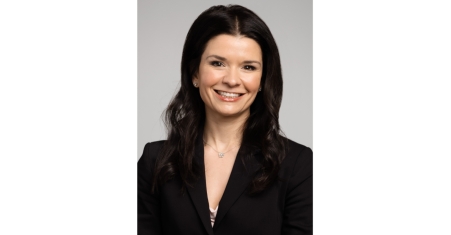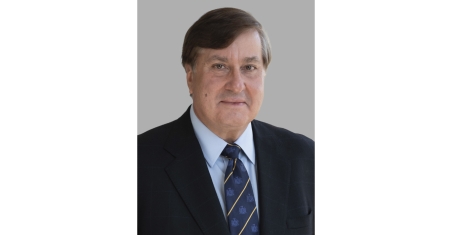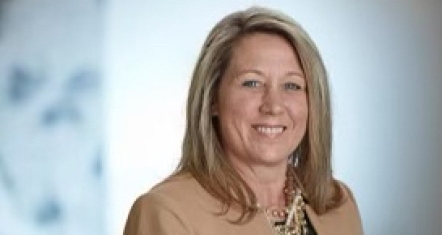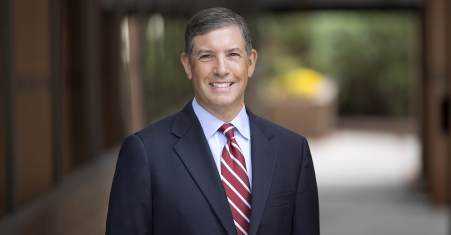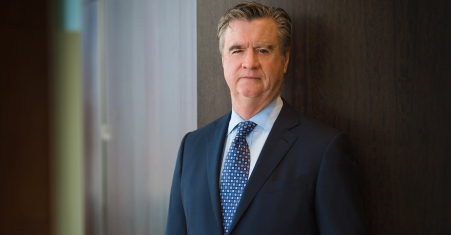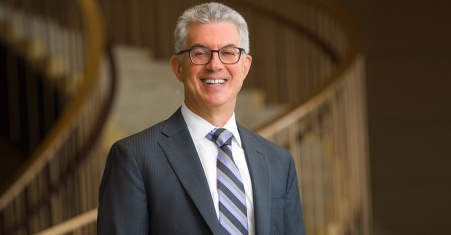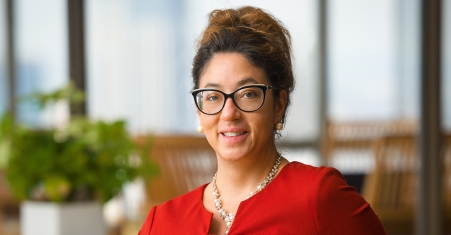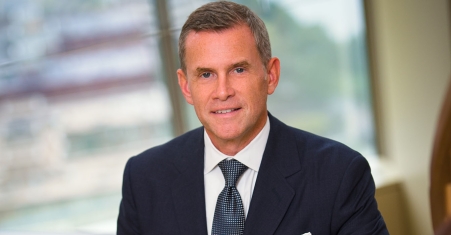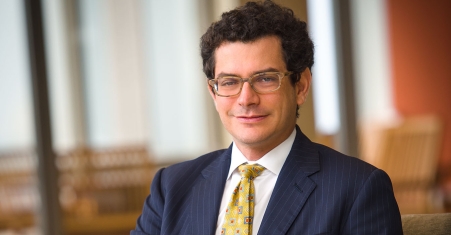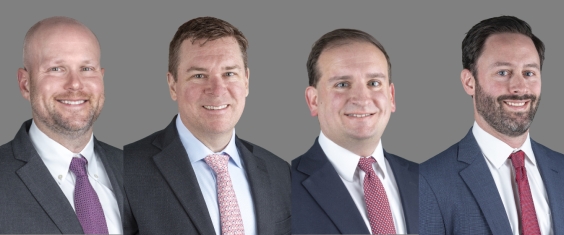Cadwalader, Wickersham & Taft
200 Liberty Street
New York, NY 10281
T. +1 212 504 6000
cwtinfo@cwt.com

Cadwalader, Wickersham & Taft has more than 230 years of legal experience and innovation. As one of the world's most prominent financial services law firms, the firm has long-standing client relationships with premier financial institutions, funds, Fortune 500 companies and other leading corporations, and individual private clients. The firm has earned a reputation for crafting innovative business and financial solutions and developing precedent-setting legal strategies to achieve clients' goals.
History
Cadwalader's longstanding tradition of providing our clients with unparalleled service and legal expertise began with the firm's founding in 1792. Read more.
Clients
Cadwalader represents the world's leading financial institutions, corporations and funds. The firm's attorneys work closely with clients to solve the complex legal and business challenges that arise in today's global marketplace. Read more.
Diversity & Inclusion
Cadwalader is committed to fostering a diverse and inclusive work environment that welcomes and supports the development and advancement of individuals of all backgrounds. Read more.
Pro Bono
Through a range of pro bono programs, Cadwalader provides assistance to organizations and individuals who cannot afford quality legal representation. Read more.
Lawdragon Features
Danielle Tully on Perseverance, Patent Law and Promoting Women
By Meghan Hemingway | Lawyer Limelights, 2023 Lawdragon Magazine Features
She recently led a team at Cadwalader to a huge victory in a post-trial win for their client, AngioDynamics, in a labyrinthine patent dispute.
The Making of a White-Collar Legend: Nicholas Gravante
By Katrina Dewey | Lawyer Limelights, News & Features, 2023 Lawdragon Magazine Features
He's represented the likes of Hunter Biden, senior Trump officials and Kanye West in his winding career.
Karen Dyer 1963-2022
By Katrina Dewey | News & Features, Obituaries
She was a top litigation partner at Cadwalader, and for many years before that at Boies Schiller F…
Cadwalader Builds Heavyweight Litigation Presence
By Katrina Dewey | News & Features
Pat Quinn couldn’t have known six years ago that this moment would come in precisely this shap…
Lawyer Limelight: Sean O’Shea
By Katrina Dewey | Lawyer Limelights
Sean O’Shea found it easy to separate the good guys from the bad guys. A hard-charging prosecu…
Lawyer Limelight: Lary Stromfeld
By James Langford | Lawyer Limelights, Dealmakers
Lary Stromfeld has always been drawn to big challenges, whether it’s setting standards for the…
Lawyer Limelight: Ellen Holloman
By Katrina Dewey | Lawyer Limelights
Ellen Holloman knew from a very young age that she would be a doctor or a lawyer. Expectations wer…
Lawyer Limelight: Patrick Quinn
By Katrina Dewey | Lawyer Limelights, Dealmakers
Pat Quinn is a Cadwalader lifer. He summered at the firm and joined it for good when he graduated f…
Richard Brand on Cadwalader's Thriving Corporate Practice
By James Langford | Lawyer Limelights, Dealmakers
Chances are, you've heard of Richard Brand's work. As a partner and co-chair of the corporate g…
Lawdragon News
Cadwalader Elects New Partners
By Lawdragon News | Press Releases, Cadwalader News
Cadwalader is thrilled to share the great news that Bobby DiNardo, Jinisha Patel and Hunter White ha…
Cadwalader Enhances Leveraged Finance Capabilities Andro Atlaga
By Lawdragon News | Press Releases, Cadwalader News
Cadwalader has welcomed Andro Atlaga as a partner in the firm’s Leveraged Finance and …
Cadwalader Enhances Restructuring Capabilities
By Lawdragon News | Press Releases, Cadwalader News
Cadwalader has strengthened its Financial Restructuring team with the addition of Douglas Mintz. Do…
Cadwalader Enhances Fund Finance Capabilities With New London Partners
By Lawdragon News | Press Releases, Cadwalader News
Cadwalader is adding leading UK fund finance lawyers Bronwen Jones, Douglas Murning and Matthew Wort…
Cadwalader Strengthens Financial Regulation Team
By Lawdragon News | Press Releases, Cadwalader News
Cadwalader is pleased to announce the return of Dan Meade, a highly respected bank regulatory lawyer…
Cadwalader Secures Major Win in Securities Class Action
By Lawdragon News | Press Releases, Cadwalader News
Cadwalader has secured the dismissal of a securities class action lawsuit against Jing (Angela) Shan…
Cadwalader Elects New Partners
By Lawdragon News | Press Releases, Cadwalader News
Cadwalader today announced its lawyers who have been elevated to partner, special counsel and counse…
Cadwalader Enhances Global Investigations, Regulatory Enforcement Capabilities
By Lawdragon News | Press Releases, Cadwalader News
Cadwalader has added Laura Perkins, one of the world’s foremost FCPA lawyers and a skilled inv…
Cadwalader Enhances Corporate Practice With Jaye Kasper
By Lawdragon News | Press Releases, Cadwalader News
Cadwalader has added Jaye Kasper, a leading advisor to private equity funds and public and private c…
Cadwalader Enhances Capital Markets, Private Credit Capabilities With Partner Richard Hanson
By Lawdragon News | Press Releases, Cadwalader News
Cadwalader has added Richard Hanson, a leading UK lawyer in structured finance, securitizations an…
Cadwalader Adds Specialty Finance and Securitization Partner
By Lawdragon News | Press Releases, Cadwalader News
New York, April 18, 2023 — Cadwalader, Wickersham & Taft LLP has announced that Ryan …
Cadwalader Adds Government Enforcement, Compliance and Investigations Partners
By Lawdragon News | Press Releases, Cadwalader News
February 6, 2023 — Cadwalader, Wickersham & Taft LLP today announced that partners M…
Cadwalader Recruits Market-Leading Leveraged Finance and Private Credit Group
By Lawdragon News | Press Releases, Cadwalader News
Partners Ronald Lovelace, Patrick Yingling, Jared Zajac and Joseph Polonsky bring market-leading rep…
Executive Compensation and Benefits Lawyer Michael Bergmann Joins Cadwalader
By Lawdragon News | Press Releases, Cadwalader News
New York, November 17, 2021 — Cadwalader, Wickersham & Taft LLP today announced that…
Philip Khinda Joins Cadwalader’s White Collar Defense and Investigations Practice
By Lawdragon News | Press Releases, Cadwalader News
Washington, D.C., July 7, 2021 — Cadwalader, Wickersham & Taft LLP announced today th…
2026 Honorees
Sulie Arias
New York
Adam Blakemore
London
Kathryn M. Borgeson
Washington, D.C.
Lawrence S. Brandman
New York
Jon P. Brose
New York
Patrick Calves
New York
Andrew Carlon
New York
Gina Castellano
New York
Holly Chamberlain
Charlotte, N.C.
Holly Marcille Chamberlain
Charlotte
Danyeale Chung
Charlotte, N.C.
Rebecca Crowley
London
Sophie K. Cuthbertson
Washington, D.C.
Christopher Dickson
Charlotte, N.C.
Christopher J. Dickson
Charlotte
Matthew Duncan
London
Leah Edelboim
New York
Brian Foster
New York
James Frazier
New York
Michael S. Gambro
Charlotte, N.C.
Douglas Gansler
Washington, D.C.
David S. Gingold
New York
Stuart N. Goldstein
Charlotte, N.C.
Nicholas A. Gravante
New York
Nicholas A. Gravante Jr.
New York
Thomas Grodecki
London
Tom Grodecki
London
Steven M. Herman
New York
Tim Hicks
Charlotte, N.C.
Mark P. Howe
Washington, D.C.
Phil J. Iovieno
New York
Philip J. Iovieno
New York
Matthew Karlan
New York
Steven T. Kolyer
New York
Henry A. LaBrun
Charlotte, N.C.
Alan W. Lawrence
New York
Trent E. Lindsay
Charlotte, N.C.
Peter Y. Malyshev
Washington, D.C.
Bevis Metcalfe
London
Jed Miller
New York
William P. Mills
New York
Douglas S. Mintz
Washington, D.C.
Wesley A. Misson
Charlotte, N.C.
John T. Moehringer
New York
Christopher Montgomery
Charlotte
Sean F. O'Shea
New York
Andrew J. O’Brien
New York
Gregory P. Patti Jr.
New York
Lisa Pauquette
New York
George Pelling
London
Laura Perkins
Washington, D.C.
Michael Petrella
New York
Gregory M. Petrick
London
Joseph Polonsky
New York
Nick Ramphal
New York
Matthew Robertson
Charlotte
Y. Jeffrey Rotblat
New York
Michael C. Rupe
New York
Casey John Servais
New York
Kevin Sholette
Charlotte
Gary P. Silverstein
New York
Jared Stanisci
New York
Lary Stromfeld
New York
Linda Z. Swartz
New York
Anne M. Tompkins
New York
Danielle Vincenti Tully
New York
Mercedes Kelley Tunstall
Washington, D.C.
Brian Wallach
Washington, D.C.
Jonathan Watkins
Charlotte, N.C.
Neil J. Weidner
New York
Martin J. Weinstein
Washington, D.C.
Jared Zajac
New York
Thank you for your interest in Lawdragon.
